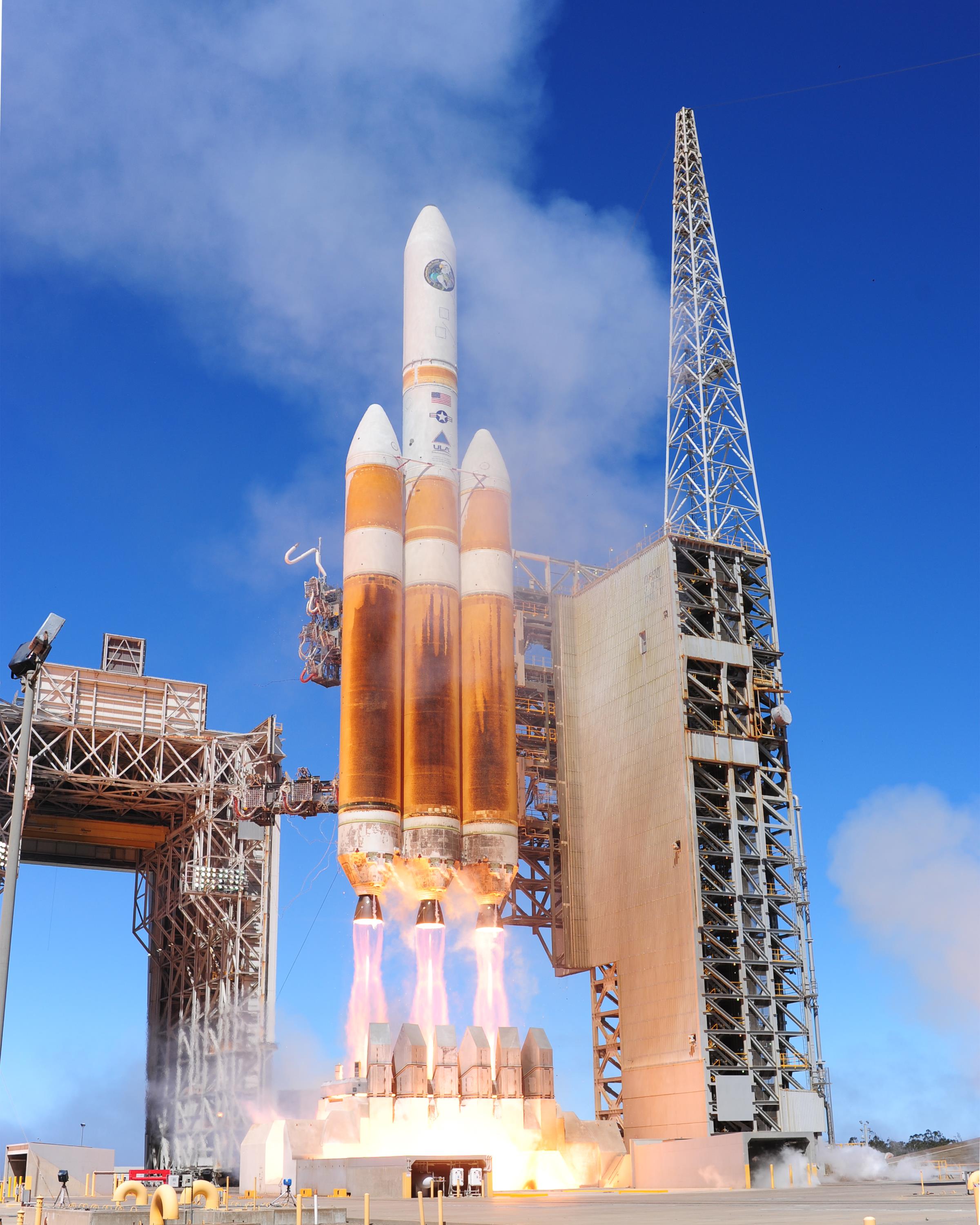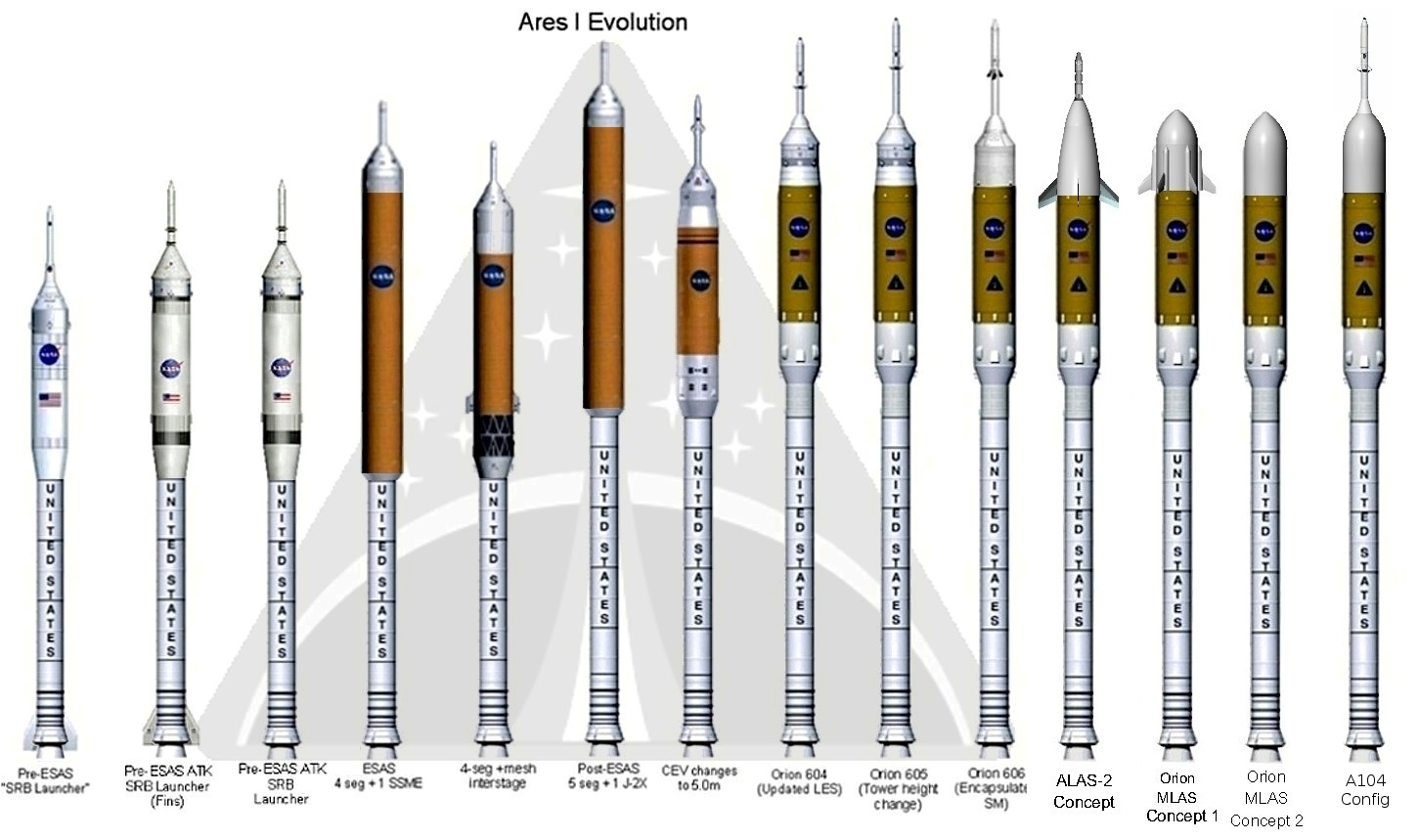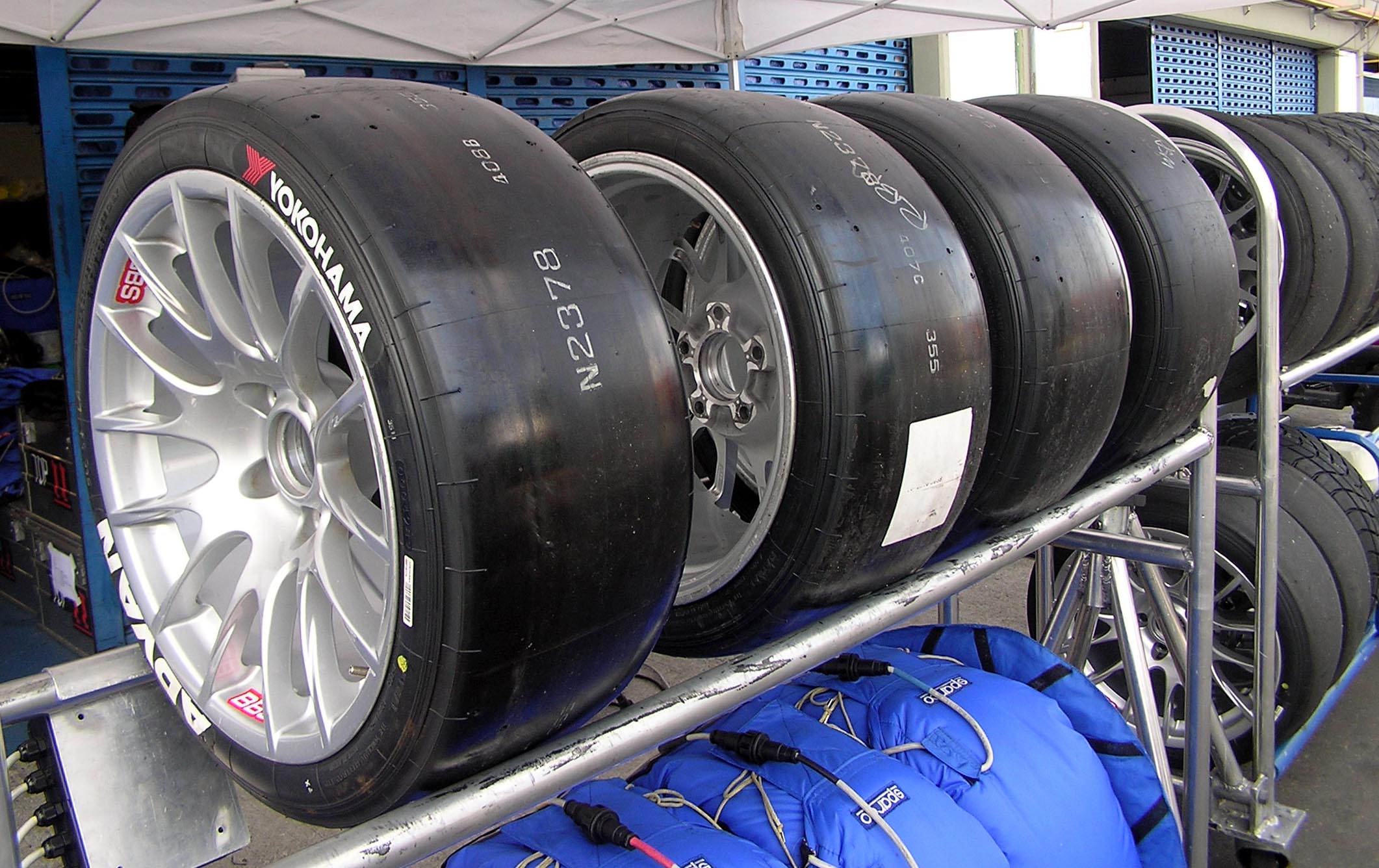|
Polybutadiene Acrylonitrile
Polybutadiene acrylonitrile (PBAN) copolymer, also noted as polybutadiene—acrylic acid—acrylonitrile terpolymer is a copolymer compound used most frequently as a rocket propellant fuel mixed with ammonium perchlorate oxidizer. It was the binder formulation widely used on the 1960s–1970s big booster rocket, boosters (e.g., Titan III and Space Shuttle Solid Rocket Booster, Space Shuttle SRBs). It is also notably used in NASA's Space Launch System, likely reusing the design from its Space Shuttle counterpart. Polybutadiene acrylonitrile is also sometimes used by amateurs due to simplicity, very low cost, and lower toxicity than the more common hydroxyl-terminated polybutadiene (HTPB). HTPB uses isocyanates for curing, which have a relatively quick curing time; however, they are also generally toxic. PBAN based composite propellants also have a slightly higher performance than HTPB based propellants. PBAN is normally cured with the addition of an epoxy resin, taking seve ... [...More Info...] [...Related Items...] OR: [Wikipedia] [Google] [Baidu] |
Copolymer
In polymer chemistry, a copolymer is a polymer derived from more than one species of monomer. The polymerization of monomers into copolymers is called copolymerization. Copolymers obtained from the copolymerization of two monomer species are sometimes called ''bipolymers''. Those obtained from three and four monomers are called ''terpolymers'' and ''quaterpolymers'', respectively. Copolymers can be characterized by a variety of techniques such as NMR spectroscopy and size-exclusion chromatography to determine the molecular size, weight, properties, and composition of the material. Commercial copolymers include acrylonitrile butadiene styrene (ABS), styrene/butadiene co-polymer (SBR), nitrile rubber, styrene-acrylonitrile, styrene-isoprene-styrene (SIS) and ethylene-vinyl acetate, all of which are formed by chain-growth polymerization. Another production mechanism is step-growth polymerization, which is used to produce the nylon-12/6/66 copolymer of nylon 12, nylon 6 a ... [...More Info...] [...Related Items...] OR: [Wikipedia] [Google] [Baidu] |
Hydroxyl-terminated Polybutadiene
Hydroxyl-terminated polybutadiene (HTPB) is an oligomer of butadiene terminated at each end with a hydroxyl functional group. It reacts with isocyanates to form polyurethane polymers. HTPB is a translucent liquid with a color similar to wax paper and a viscosity similar to corn syrup. The properties vary because HTPB is a mixture rather than a pure compound, and it is manufactured to meet customers' specific requirements. A typical HTPB is R-45HTLO. This product consists of oligomeric units typically containing 40–50 butadiene molecules bonded together, with each end of the chain terminated with a hydroxyl Hgroup: R-45HTLO has a functionality of 2.4-2.6, which means that there is (approximately) one additional hydroxyl group located along the chain for every two oligomeric units. This provides side-to-side linkage for a stronger cured product. HTPB is usually cured by an addition reaction with di- or poly-isocyanate compounds. Uses Materials production Polyurethanes ... [...More Info...] [...Related Items...] OR: [Wikipedia] [Google] [Baidu] |
Acrylate Polymers
An acrylate polymer (also known as acrylic or polyacrylate) is any of a group of polymers prepared from acrylate monomers. These plastics are noted for their transparency, resistance to breakage, and elasticity. Acrylate polymer is commonly used in cosmetics, such as nail polish, as an adhesive. History The first synthesis of acrylic polymer was reported by G. W. A. Kahlbaum in 1880. Acrylic elastomers Acrylic elastomer is a general term for a type of synthetic rubber whose primary component is acrylic acid alkylester ( ethyl or butyl ester). Acrylic elastomer possesses characteristics of heat and oil resistance, with the ability to withstand temperatures of 170–180 °C. It is used primarily for producing oil seals and packaging related to automobiles. Acrylic elastomer can generally be characterized as one of two types. "Old" types include ACM (copolymer of acrylic acid ester and 2-chloroethyl vinyl ether) containing chlorine and ANM (copolymer of acrylic acid ester ... [...More Info...] [...Related Items...] OR: [Wikipedia] [Google] [Baidu] |
Rocket Fuels
Rocket propellant is used as reaction mass ejected from a rocket engine to produce thrust. The energy required can either come from the propellants themselves, as with a chemical rocket, or from an external source, as with ion engines. Overview Rockets create thrust by expelling mass rear-ward, at high velocity. The thrust produced can be calculated by multiplying the mass flow rate of the propellants by their exhaust velocity relative to the rocket (specific impulse). A rocket can be thought of as being accelerated by the pressure of the combusting gases against the combustion chamber and Rocket engine nozzle, nozzle, not by "pushing" against the air behind or below it. Rocket engines perform best in outer space because of the lack of air pressure on the outside of the engine. In space it is also possible to fit a longer nozzle without suffering from flow separation. Most chemical propellants release energy through redox chemistry, more specifically combustion. As such, both an ... [...More Info...] [...Related Items...] OR: [Wikipedia] [Google] [Baidu] |
Ares I
Ares I was the crew launch vehicle that was being developed by NASA as part of the Constellation program. The name "Ares" refers to the Greek deity Ares, who is interpretatio graeca, identified with the Roman god Mars (mythology), Mars. Ares I was originally known as the "Crew Launch Vehicle" (CLV). NASA planned to use Ares I to launch Orion (spacecraft)#Orion Crew Exploration Vehicle (CEV), Orion, the spacecraft intended for NASA human spaceflight missions after the Space Shuttle was retired in 2011. Ares I was to complement the larger, uncrewed Ares V, which was the cargo launch vehicle for Constellation. NASA selected the Ares designs for their anticipated overall safety, reliability and cost-effectiveness. However, the Constellation program, including Ares I, was cancelled by U.S. president Barack Obama in October 2010 with the passage of his 2010 NASA authorization bill. In September 2011, NASA detailed the Space Launch System as its new vehicle for human exploration beyond ... [...More Info...] [...Related Items...] OR: [Wikipedia] [Google] [Baidu] |
Constellation Program
The Constellation program (abbreviated CxP) was a crewed spaceflight program developed by NASA, the space agency of the United States, from 2005 to 2009. The major goals of the program were "completion of the International Space Station" and a "return to the Moon no later than 2020" with a crewed flight to the planet Mars as the ultimate goal. The program's logo reflected the three stages of the program: the Earth (ISS), the Moon, and finally Mars—while the Mars goal also found expression in the name given to the program's booster rockets: Ares V, Ares (the Greek equivalent of the Roman god Mars (mythology), Mars). The technological aims of the program included the regaining of significant astronaut experience beyond low Earth orbit and the development of technologies necessary to enable sustained human presence on other planetary bodies. Constellation began in response to the goals laid out in the Vision for Space Exploration under NASA Administrator Sean O'Keefe and President ... [...More Info...] [...Related Items...] OR: [Wikipedia] [Google] [Baidu] |
Epoxy
Epoxy is the family of basic components or Curing (chemistry), cured end products of epoxy Resin, resins. Epoxy resins, also known as polyepoxides, are a class of reactive prepolymers and polymers which contain epoxide groups. The epoxide functional group is also collectively called ''epoxy''. The IUPAC name for an epoxide group is an oxirane. Epoxy resins may be reacted (cross-linked) either with themselves through catalytic homopolymerisation, or with a wide range of co-reactants including polyfunctional amines, acids (and acid anhydrides), phenols, alcohols and thiols (sometimes called mercaptans). These co-reactants are often referred to as hardeners or curatives, and the cross-linking reaction is commonly referred to as Curing (chemistry), curing. Reaction of polyepoxides with themselves or with polyfunctional hardeners forms a thermosetting polymer, often with favorable mechanical properties and high thermal and chemical resistance. Epoxy has a wide range of application ... [...More Info...] [...Related Items...] OR: [Wikipedia] [Google] [Baidu] |
Composite Propellant
Ammonium perchlorate composite propellant (APCP) is a solid rocket propellant. It differs from many traditional solid rocket propellants such as black powder or zinc-sulfur, not only in chemical composition and overall performance but also by being cast into shape, as opposed to powder pressing as with black powder. This provides manufacturing regularity and repeatability, which are necessary requirements for use in the aerospace industry. Uses Ammonium perchlorate composite propellant is typically for aerospace rocket propulsion where simplicity and reliability are desired and specific impulses (depending on the composition and operating pressure) of are adequate. Because of these performance attributes, APCP has been used in the Space Shuttle Solid Rocket Boosters, aircraft ejection seats, and specialty space exploration applications such as NASA's Mars Exploration Rover descent stage retrorockets. In addition, the high-power rocketry community regularly uses APCP in the f ... [...More Info...] [...Related Items...] OR: [Wikipedia] [Google] [Baidu] |
Isocyanate
In organic chemistry, isocyanate is the functional group with the formula . Organic compounds that contain an isocyanate group are referred to as isocyanates. An organic compound with two isocyanate groups is known as a diisocyanate. Diisocyanates are manufactured for the production of polyurethanes, a class of polymers. Isocyanates should not be confused with cyanate esters and isocyanides, very different families of compounds. The cyanate (cyanate ester) functional group () is arranged differently from the isocyanate group (). Isocyanides have the connectivity , lacking the oxygen of the cyanate groups. Structure and bonding In terms of bonding, isocyanates are closely related to carbon dioxide (CO2) and carbodiimides (C(NR)2). The C−N=C=O unit that defines isocyanates is planar, and the N=C=O linkage is nearly linear. In phenyl isocyanate, the C=N and C=O distances are respectively 1.195 and 1.173 Å. The C−N=C angle is 134.9° and the N=C=O angle is 173.1 ... [...More Info...] [...Related Items...] OR: [Wikipedia] [Google] [Baidu] |
Space Launch System
The Space Launch System (SLS) is an American Super heavy-lift launch vehicle, super heavy-lift Expendable launch system, expendable launch vehicle used by NASA. As the primary launch vehicle of the Artemis program, Artemis Moon landing program, SLS is designed to launch the crewed Orion (spacecraft), Orion spacecraft on a trans-lunar trajectory. The first (and so far only) SLS launch was the uncrewed Artemis I, which took place on 16 November 2022. Development of SLS began in 2011 as a replacement for the retiring Space Shuttle as well as the canceled Ares I and Ares V launch vehicles. SLS was built using existing Shuttle technology, including Space Shuttle Solid Rocket Booster, solid rocket boosters and RS-25 engines. The rocket has been criticized for its political motivations, seen as a way to preserve jobs and contracts for aerospace companies involved in the Shuttle program at great expense to NASA. The project has faced significant challenges, including mismanagemen ... [...More Info...] [...Related Items...] OR: [Wikipedia] [Google] [Baidu] |
Polybutadiene
Polybutadiene utadiene rubber, BRis a synthetic rubber. It offers high elasticity, high resistance to wear, good strength even without fillers, and excellent abrasion resistance when filled and vulcanized. "Polybutadiene" is a collective name for homopolymers formed from the polymerization of the monomer 1,3-butadiene. The IUPAC refers to polybutadiene as "poly(buta-1,3-diene)". Historically, an early generation of synthetic polybutadiene rubber produced in Germany by Bayer using sodium as a catalyst was known as "Buna rubber". Polybutadiene is typically crosslinked with sulphur, however, it has also been shown that it can be UV cured when bis-benzophenone additives are incorporated into the formulation. Polybutadiene rubber (BR) accounted for about 28% of total global consumption of synthetic rubbers in 2020, whereas styrene-butadiene rubber (SBR) was by far the most important grade (S-SBR 12%, E-SBR 27% of the entire synthetic rubber market). It is mainly used in the manuf ... [...More Info...] [...Related Items...] OR: [Wikipedia] [Google] [Baidu] |
Space Shuttle Solid Rocket Booster
The Space Shuttle Solid Rocket Booster (SRB) was the first solid-propellant rocket to be used for primary propulsion on a vehicle used for human spaceflight. A pair of them provided 85% of the Space Shuttle's thrust at liftoff and for the first two minutes of ascent. After burnout, they were jettisoned, and parachuted into the Atlantic Ocean, where they were recoverable booster, recovered, examined, refurbished, and reusable launch system, reused. The Space Shuttle SRBs were the most powerful solid rocket motors to ever launch humans. The Space Launch System (SLS) SRBs, adapted from the shuttle, surpassed it as the most powerful solid rocket motors ever flown, after the launch of the Artemis 1 mission in 2022. Each Space Shuttle SRB provided a maximum thrust, roughly double the most powerful single-combustion chamber liquid-propellant rocket engine ever flown, the Rocketdyne F-1. With a combined mass of about , they comprised over half the mass of the Shuttle stack at liftoff. ... [...More Info...] [...Related Items...] OR: [Wikipedia] [Google] [Baidu] |






